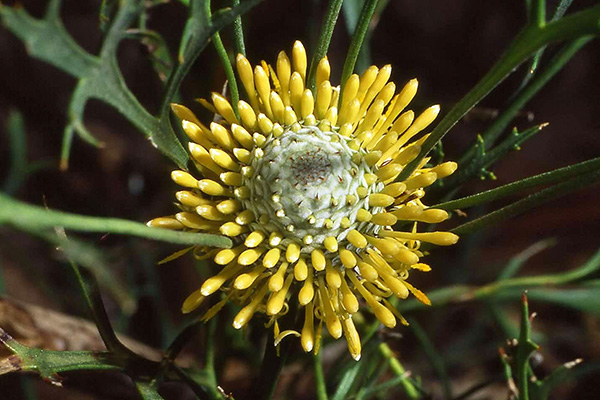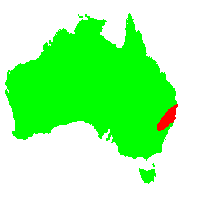General Description:
Isopogon is a genus of around 35 species, all occurring only in Australia. They are found in the southern half of the continent in temperate regions. Most are small to medium sized shrubs having flower clusters arranged in globular heads. The fruits are also globular in shape giving rise to the common name of “drumsticks”. Some are also called “coneflowers” although this name is more usual in the related genus Petrophile.
Isopogon petiolaris is a low, spreading shrub usually less than 1 metre high. The leaves are 100-150 mm long and are divided into many linear segments each having a sharp tip. The leaf stalk may be about half to two-thirds of the total length of the leaf. Yellow flowers occur in spring and summer, conspicuously displayed on the ends of the branches. The flower clusters are around 35 mm in diameter and are followed by the spherical (barrel-shaped) seed pods which remain on the plant for an indefinite period.
This is an attractive and hardy plant but it is not widely cultivated. It requires a well drained position in full sun or light shade.
I.petiolaris is usually propagated from seed which germinates readily without pretreatment. Propagation from cuttings should also be successful.

Isopogon petiolaris
Photo: Brian Walters
 Australian Native Plants Society (Australia)
Australian Native Plants Society (Australia)